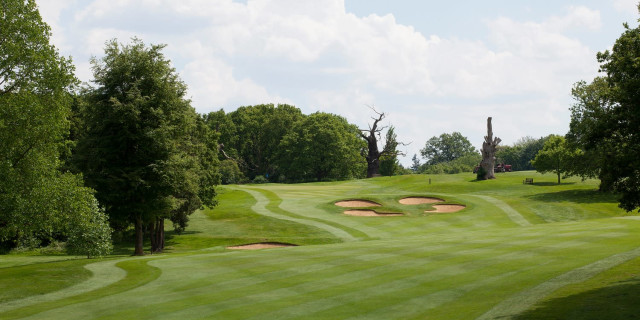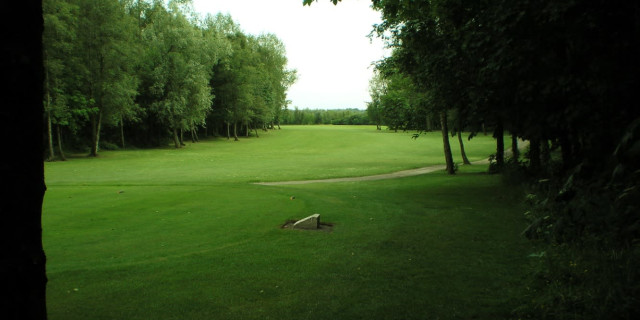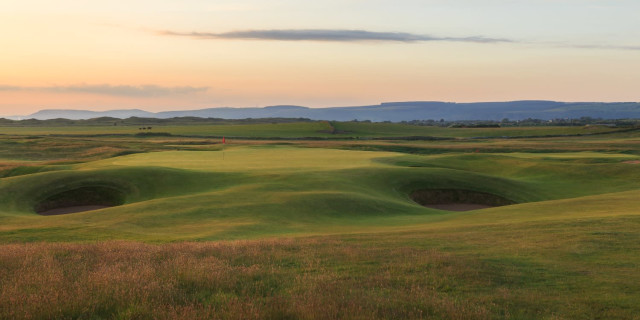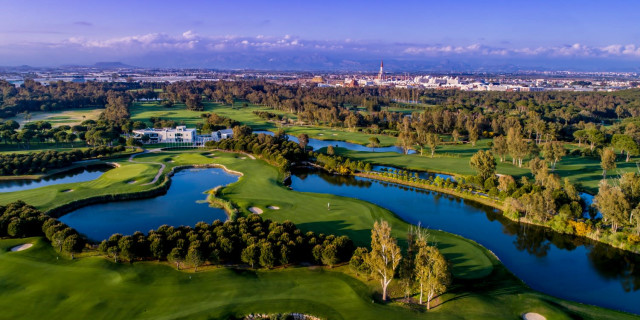
Lahinch Golf Club Feature Review
Review by Golfshake Ambassador Andrew Picken
Host of the 2019 Dubai Duty Free Irish Open on the European Tour, Lahinch has been described as ‘The St Andrews of Ireland’ among many other complimentary titles. Having now played this course I recognise that it stands comparison with some of the best in the world. Unsurprisingly, it comes Highly Recommended on Golfshake.
I consider myself to be a student of the game and its heritage and I have been blessed to visit and sample some incredible layouts. My visit to Lahinch will live long in my memory for a host of reasons. All positive.
During my visit, I acquired a copy of a book produced by the club called “125 Years of Golf at Lahinch” and it has immediately taken pride of place in my golf library. Beautifully illustrated and lovingly prepared it is a superb record of a wonderful venue.
From the infant days back in 1892 up to its 125th anniversary, the Lahinch has stood out on its own merits as a golfing institution in Ireland.

Lahinch itself is a small seaside village on the Atlantic coast in Co. Clare around 45 minutes from Shannon airport. It has become an international mecca for surfing. It boasts a 2 km golden Blue Flag beach, the flooding tide making it ideal for surfing, sea kayaking and kite surfing. It is a10 minute drive from the Cliffs of Moher. An amazing natural geological phenomenon.
I love the way the golf club embraces the village and it returns that embrace with affection and pride. It is an historic club with modern ideas and thoughts.
The Golf Course
The course design has evolved and developed with the care and consideration of some of the greatest golf architects in the history of the game.
The legendary Old Tom Morris set the highest standards for the course from the outset. He was engaged by members of the Black Watch, the Scottish regiment, who first laid out the links using feathers and sticks.
In 1894 they asked the great man from St Andrews to assist in the process and the holes known as Dell and Klondyke were created. He was followed by equally celebrated architects Charles ‘Mo’ Gibson and Dr Alister MacKenzie. Each had sufficient genius to recognise the value of the previous and simply added value to an already quality layout and links.

In 1926, Dr MacKenzie is quoted as saying “Lahinch will make the finest and most popular golf course that I, or I believe anyone else, ever constructed.”
He was a brilliant marketeer of his products, but those comments have still stood the test of time.There some genuinely jaw dropping views and vistas to be enjoyed when playing at Lahinch.
In more recent times, the expertise of Dr Martin Hawtree has added even more value to what was here before. His interventions have added significantly to the playability of the course at all standards of the game.
Phil Mickelson is a member at Lahinch. He describes Augusta and Lahinch as his favourite two golf courses in the world. Praise indeed.
This unique location is home to some of the greatest golf courses globally such as Ballybunion, Adare Manor, Tralee, Waterville and Old Head. To compete against venues of this significance the product needs to be top quality. Put simply it is!

There are some blind holes on the course as mother nature is not so kind as to give simple routing. However, for me this adds to the sheer raw enjoyment of this beautiful course.
As a general rule of thumb all footpaths cut from the turf give a general indication of the desired line of the ball off the tee. There are excellent course guides provided and I would recommend their use. They will add value to your play. Caddies are also available by prior arrangement.
Unique Club Crest
The club crest features the Scottish thistle as a memorial to the Scottish regiment as a tribute to those who first envisioned a golf links carved from what Mother Nature had provided. The Shamrock is self-evident. The goat less so.
There is clearly a real story to the Goat of Lahinch given it is commemorated in a bronze statue by the championship tee. Not the Greatest Of All Time, simply the secretary Brud Slattery discovering that the club barometer was broken.
He was suggesting that goats that roamed the fairways gave the best indication of forthcoming weather given that they took shelter when bad weather was on its way. The barometer has remained this way since the 1960s.
2019 Irish Open Preview
The course hugs the shoreline like a ruffled blanket. The village sits snug around the course and a road separates the two courses. It is not unusual to see golfers wandering the streets of the village, golf bags on backs, as they head towards accommodation. Many of the professional golfers who are attending the Irish Open comment that this was a favourite venue from the amateur playing days given that the village was so closely linked to the golf. I expect the atmosphere at the Irish Open to be second to none given the proximity of the town to the golfing action.

With a 7-million-euro prize fund this is sure to attract an excellent field who will wish to support the host, Paul McGinley. If the weather decides to get involved in this event, it could be a real challenge to even the best players in the world.
I cannot wait for the Dubai Duty Free Irish Open as I believe it will be a wonderful showcase for this great course and area of Ireland.
Hole Highlights
Among the early highlights is the 3rd hole, Cillstifian, and pay attention to the footpath as it joins the fairway. This is the ideal line for any drive. Beware the run out of fairway around the 260-yard mark. With the wind this is easily reachable.
Like many of the holes at Lahinch, I was intrigued as to why this hole had been given this name and discovered a tale. Over 1,000 years ago, an earthquake occurred in West Clare, splitting the Cliffs of Moher on the north and Baltard Cliffs on the south. The subsequent tidal wave engulfed the whole district between these two headlands, and the Atlantic is now rolling over what was once dry land. One of the many hamlets to be buried with its people in that disastrous event was Cillstifiann. I was told with utter conviction that time and time again the ghost town of Cillstifiann with its monastery and clustering houses has been seen in the clear waters of the bay south of Lahinch and that its appearance has signalled death and disaster to those who have witnessed it.

Continuing this theme, the 4th, Klondyke is a hauntingly beautiful golf hole. 475 yards from the back tees. The approach into the green is made over the fearsome Klondyke Hill that bisects the fairway and imposes itself even when unreachable from the tee. A flag man is positioned atop this structure with a shelter permanently provided as the shot into the green crosses over the 18th fairway. There are very few golf courses globally that would put up with this type of inconvenience, but it feels completely right here. It also allows the round to be played at a decent pace by having experienced staff dictating the pace of play. This is deemed the easiest hole on the course, but I still treasure the par I secured.
Then you face the 5th, Dell, and what a par three it is! This is an absolute gem. A blind tee shot to a green 154 yards away. The line of the flag indicated by a large white stone placed high on the dunes indicating that days pin position. Taking note of the course guide, I aimed 10 yards to the right of the stone and was able to walk off having secured a hard earned three. The weather at this point in the round was incredible. We had horizontal hailstones that slapped painfully into the cheeks, together with a wind that buffeted and blew us off our feet. I played a hybrid under the wind to reach the green.

What a wonderful golf hole. I genuinely felt like I was playing golf in a museum and I felt privileged to be able to do so, even with the weather. I am told by a very reliable local source who plays this course regularly that club members use the contours on the sides of the green when putting to bounce the ball off the slopes back towards the pin.
The 8th is a par three measuring 166 yards from the back tees. An elevated tee to an elevated green with a massive natural crater in between. Abandon hope all who enter here. This is a visually intimidating hole but immensely satisfying when our group secured three balls on the green. We then had time to pose with the Prostate Cancer UK flag as a poignant reminder that 1 in 8 men will be affected by the disease during their lifetime.

When it comes to unique names, the 11th - Liscannor - is hard to beat. This hole name is thought to derive from the ancient Gaelic. “Lios Ceannúir” meaning ring fort. The village of Liscannor is also within view. It played a significant part when several members of the Spanish Armada were damaged close by in 1588. The green is certainly well protected at all points by nature and bunkering. This is yet another simply stunning par three of 170 yards from the back tees.
Heading to the finish, the 17th - Pons Asinorum - is a par four standing at 436 yards. The road to the village runs the length of the hole and a variety of tee boxes placed at different angles ensure that the subtle doglog requires playing differently from each starting point. A strange name that means a critical test of ability or understanding but also has derivations linked to the isosceles triangle establishing that the base angles of such a triangle are equal. Both could easily apply given the layout when considered with other holes. Despite its innocuous appearance from the tee, this hole completely undid my golf. Once out of position from the tee, the screw was tightened, and I struggled to finish the hole.
Finally, the 18th is known as Shaw, a 534-yard par five that is another beauty with the road lurking its full length left, encouraging pushed shots into the awaiting hazards right and ruffles in the terrain that will prevent any sort of a decent approach into the green. This is a great finishing hole.
Final Thoughts

My local source suggests that even though you might be a good chipper and wedge player, the putter from off the green reigns supreme in Lahinch.
If visiting this venue, please don’t forget about the Castle Course that was established as an 18 holer in 1975. It is less hilly than its more esteemed brother but is still an excellent challenge. There were many visiting society golfers using this facility as part of a group trip and they all reported that it too was a joy to play.
We had all possible weather conditions during the same round of golf. Bright sunshine, snow and hail. It was simply magnificent.

This was a memorable experience that I intend to repeat. Lahinch is an absolute gem and the memories of accepting its challenges will live with me for a long time.
Related Content: review Lahinch Ireland

















